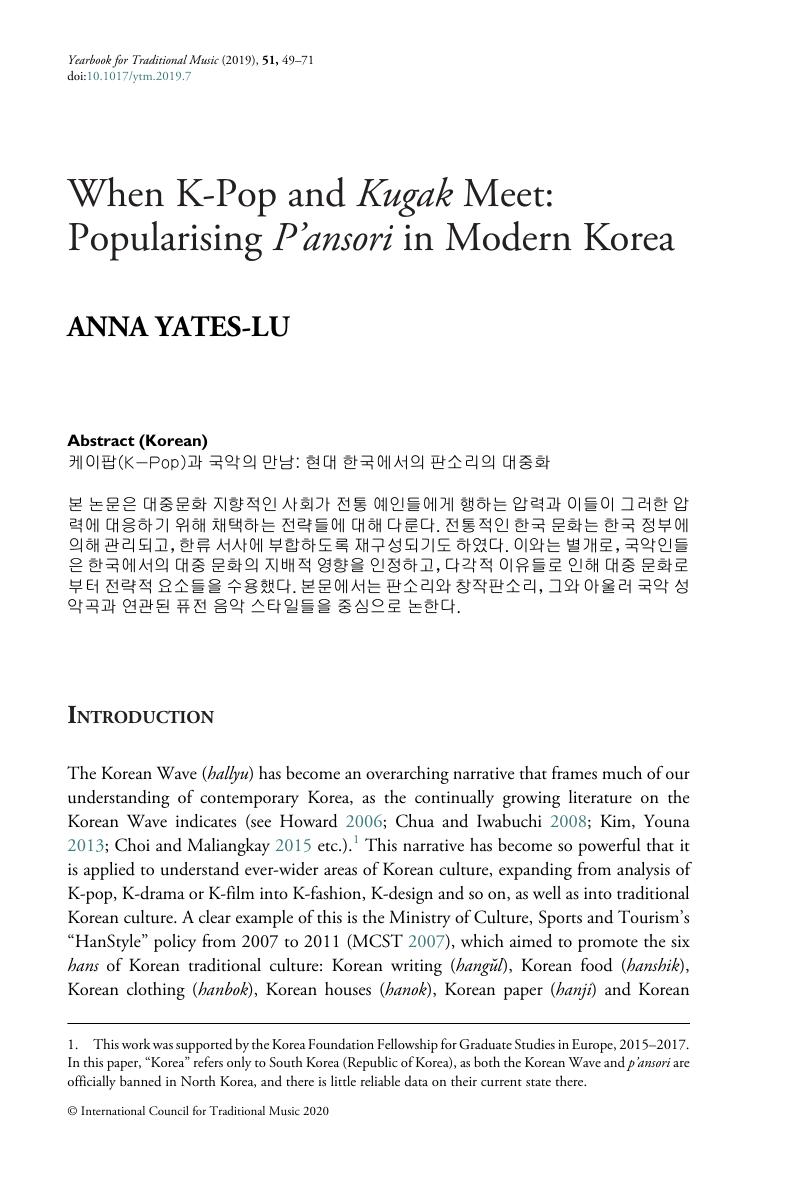Crossref Citations
This article has been cited by the following publications. This list is generated based on data provided by Crossref.
Saeji, CedarBough T.
2020.
From Hanok to Hanbok: Traditional iconography in Korean hip hop music videos.
Global Hip Hop Studies
,
Vol. 1,
Issue. 2,
p.
249.
Yates-Lu, Anna
2021.
Plotting the course: artistry, celebrity and kugak in South Korea.
Celebrity Studies,
Vol. 12,
Issue. 2,
p.
250.
Maliangkay, Roald
2022.
The Two Koreas and their Global Engagements.
p.
141.
Nara, Vivien
2024.
Gentlemen rappers: Masculinity and traditional style in Korean popular music performance.
Media, Culture & Society,
Vol. 46,
Issue. 7,
p.
1344.



